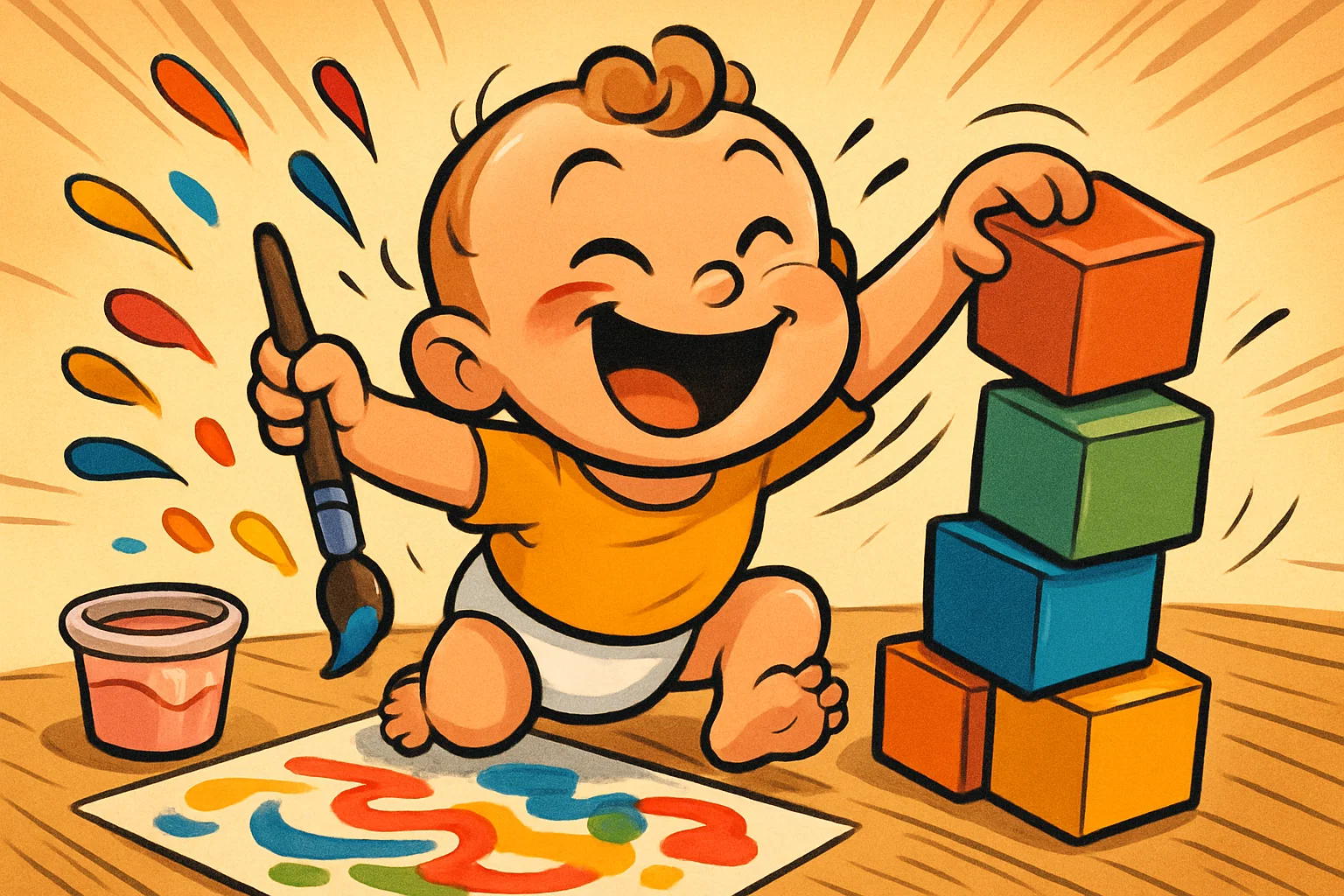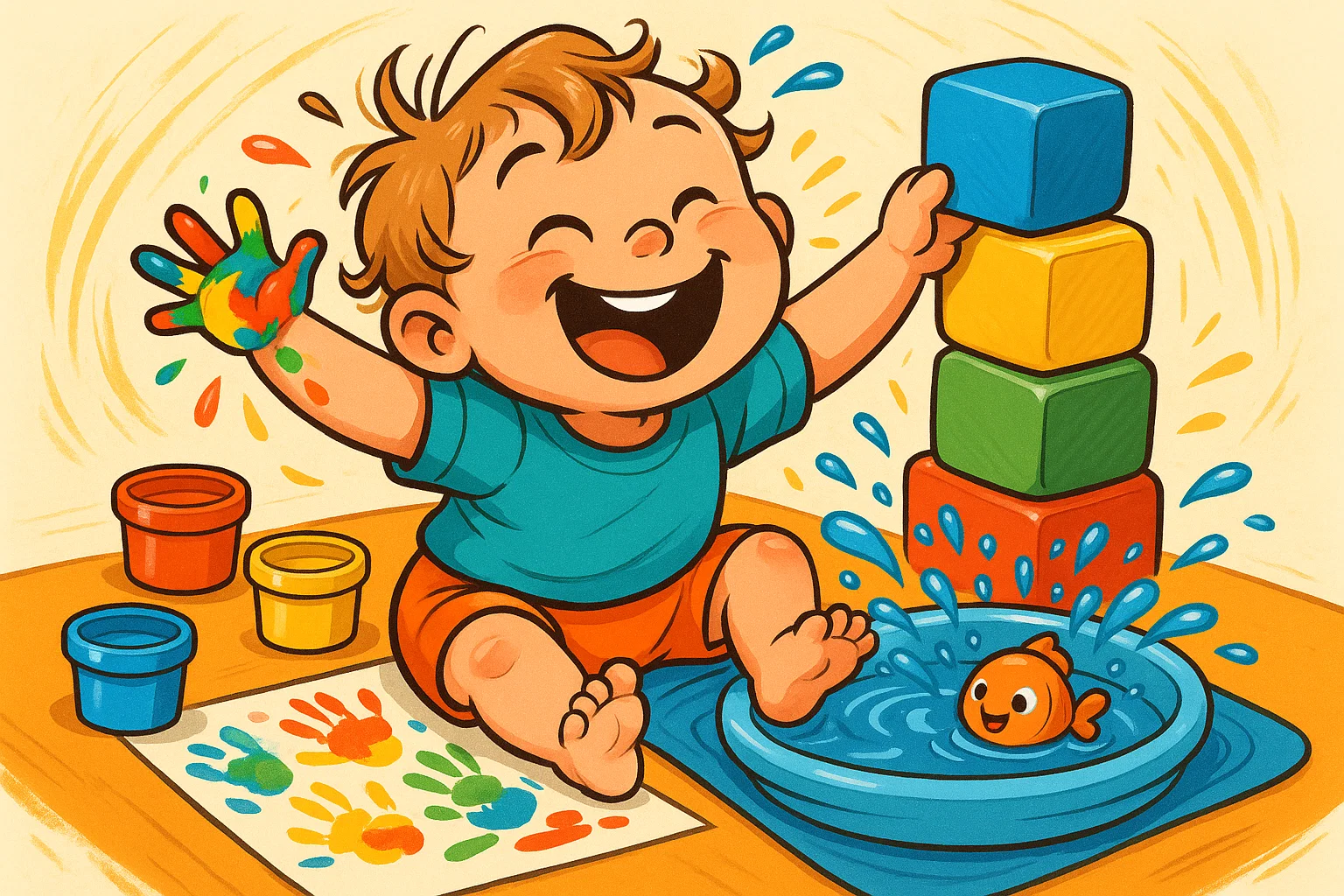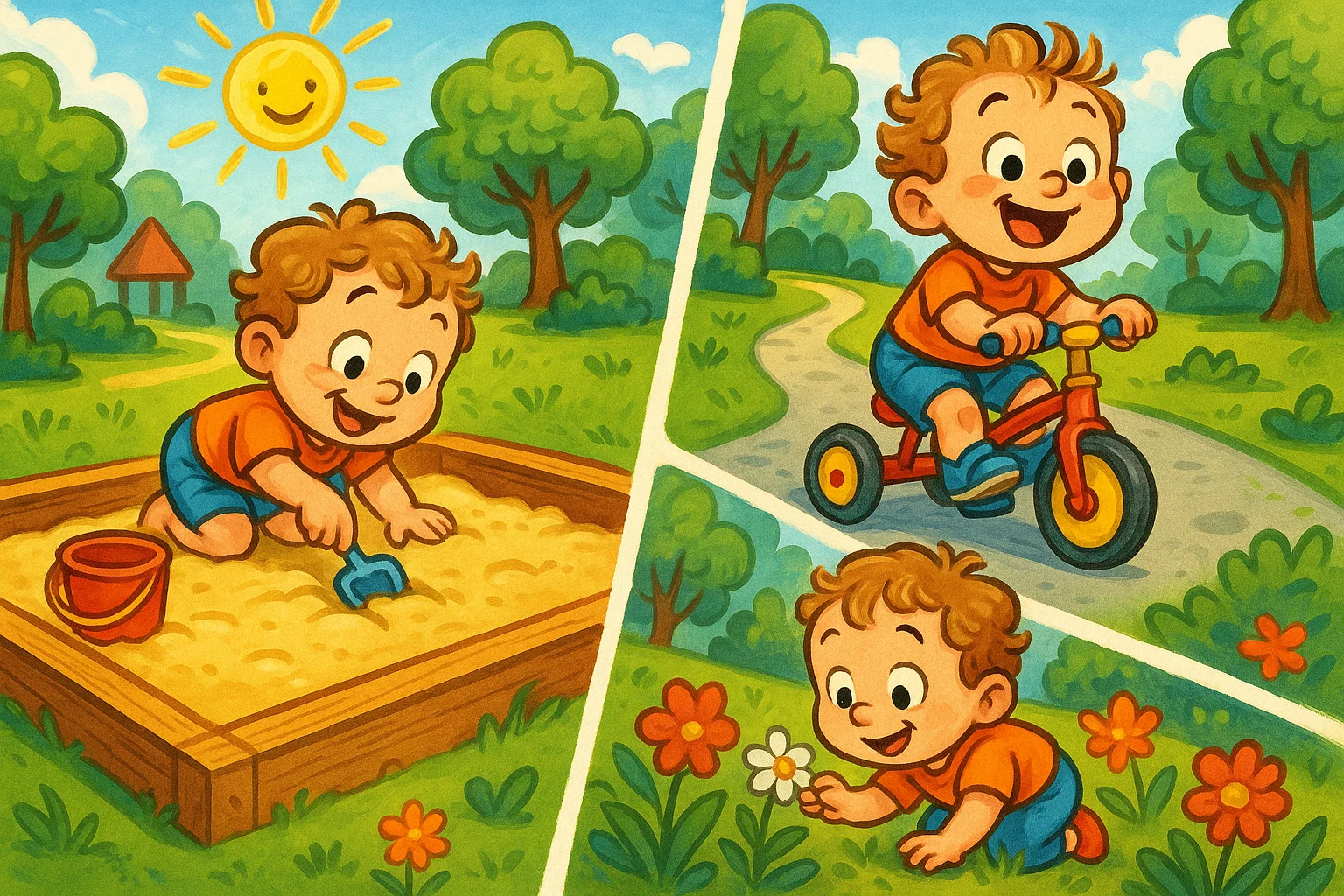Activities for Toddlers: Fun and Educational Ideas to Keep Your Little One Engaged

Keeping toddlers entertained while supporting their development can feel like a constant juggling act. Between managing their boundless energy and short attention spans, parents often find themselves searching for fresh activity ideas that are both engaging and educational. The good news? You don’t need expensive toys or elaborate setups to create meaningful experiences for your child.
Simple activities using everyday materials can be just as effective as store-bought educational toys in promoting cognitive, motor, and social skills. Understanding your toddler’s developmental needs helps create more targeted and successful play experiences.
This comprehensive guide offers practical, tested activities that busy parents can easily implement at home or on-the-go. Each suggestion focuses on using common household items while supporting your toddler’s natural curiosity and love for exploration.
Indoor Activities

Indoor play doesn’t have to mean screen time or expensive equipment. With a little creativity, your home becomes a playground of learning opportunities that can keep your toddler engaged for hours.
Indoor Learning Activities
Color Sorting with Everyday Items 📚
Transform ordinary household objects into a fun learning experience. Gather different colored items like pom poms, plastic cups, stickers, or small toys. Create separate bins or bowls for each color and let your toddler sort items accordingly. This simple activity strengthens cognitive skills while teaching color recognition.
Pro tip: Start with just two colors and gradually add more as your toddler masters the concept.
Paper Roll Learning Games
Empty toilet paper rolls become instant learning tools. Cut them into different lengths and have your toddler arrange them from shortest to tallest. You can also cover them with colorful paper and use them for counting exercises or as tunnels for small cars. Many toddler development experts suggest that these recycled material activities are particularly effective because they’re novel yet familiar.
DIY Busy Books
Create personalized learning materials by gathering old magazines, cardboard, and glue. Help your toddler make a book featuring their favorite colors, animals, or shapes. This hands-on approach to learning allows them to engage with concepts in a meaningful way while developing fine motor skills.
Essential Toddler Activity Supplies
- Paper products: Construction paper, tissue paper, newspaper
- Art materials: Crayons, washable markers, child-safe scissors
- Sensory items: Cotton balls, pom poms, fabric scraps
- Containers: Plastic bins, empty jars, cardboard boxes
- Natural materials: Leaves, rocks, shells, pinecones
- Kitchen supplies: Measuring cups, wooden spoons, ice cube trays
Indoor Sensory Activities
Bean and Scoop Play
Fill a large plastic bin with dried beans (ensure they’re too large to pose a choking hazard) and provide various scoops, cups, and containers. This sensory experience helps develop fine motor skills while providing tactile stimulation. Always supervise this activity closely, as toddlers are naturally curious and may attempt to taste unfamiliar items.
Bubble Sensory Bins
Mix dish soap with water in a shallow container and let your toddler explore with their hands or small toys. The different textures and temperatures create a rich sensory experience that many toddlers find incredibly engaging. Add food coloring for visual interest and watch as your toddler discovers cause and effect relationships.
Ice Play Experiments
On hot days, fill containers with colored ice cubes and let your toddler explore how they melt and change. Add small toys frozen inside ice blocks for an extra element of discovery. This activity teaches basic scientific concepts while providing cooling relief during warm weather.
Textured Material Exploration
Create sensory bags using different materials like rice, pasta, or sand. Seal them securely and let your toddler squish and manipulate them. This provides safe sensory input for toddlers who are still exploring objects by putting them in their mouths.
| Sensory Material | Skills Developed | Supervision Level | Age Recommendation |
| Dried beans | Fine motor, tactile | High | 2+ years |
| Water beads | Visual, tactile | High | 3+ years |
| Play dough | Creativity, strength | Medium | 18+ months |
| Rice bins | Scooping, pouring | Medium | 2+ years |
| Finger paints | Creativity, sensory | Medium | 15+ months |
Indoor Art Activities 🎨
Paint Without the Mess
Place drops of different paint colors inside a sealed plastic bag. Tape it to a table or high chair tray and let your toddler squish and mix colors without any cleanup. This technique allows for creative expression while keeping surfaces clean. Your toddler will love watching colors blend and change as they press and move the bag.
Sticker Art Exploration
Provide various stickers and large sheets of paper. Toddlers love the independence of peeling and placing stickers, which develops fine motor skills and hand-eye coordination. Consider creating themed sticker scenes like gardens, underwater worlds, or space adventures. This activity can easily occupy a toddler for 20-30 minutes while building concentration skills.
Natural Material Art
Gather leaves, flowers, or small rocks from your yard and create nature collages. This activity connects indoor creativity with outdoor exploration while developing artistic skills. Help your toddler arrange materials before gluing them down, discussing different shapes, sizes, and colors as you work together.
Indoor Science Activities
Kitchen Chemistry for Toddlers
Simple experiments using food coloring, baking soda, and vinegar create exciting reactions that captivate young minds. Always supervise these activities and use child-safe materials. Your toddler will be amazed by the fizzing reaction and may want to repeat the experiment multiple times.
Magnetic Discovery
Provide magnetic letters, a magnetic surface, and various small metal items. Let your toddler experiment with what sticks and what doesn’t, introducing basic scientific concepts through play. This hands-on exploration helps toddlers understand invisible forces in their world.
Water Transfer Experiments
Set up different containers with water and provide scoops, cups, and funnels. This teaches cause and effect while developing understanding of volume and measurement. Many toddlers find pouring activities particularly soothing and will engage with them for extended periods.
Indoor Gross Motor Activities
Living Room Obstacle Course
Use pillows, chairs, and blankets to create a safe obstacle course. This helps burn energy while developing coordination and spatial awareness. Change the course regularly to maintain interest and challenge your growing toddler’s developing skills.
Dance Party Learning
Combine music with movement by calling out different actions: “March like an elephant!” or “Hop like a bunny!” This activity develops gross motor skills while teaching about different animals. Most toddlers love music and movement, making this an ideal rainy day activity.
Ball Games Indoors
Soft balls or balloons provide safe indoor ball play. Practice rolling, throwing (gently), and kicking to develop coordination without damaging furniture. Create targets using empty boxes or containers to add an element of challenge for your active toddler.
Outdoor Activities

Outdoor Toddler Adventure.webp
Fresh air and open space provide endless opportunities for exploration and physical development. Outdoor activities often require minimal setup while offering maximum engagement for energetic toddlers who need space to move and explore.
Outdoor At-Home Activities
Garden Exploration and Learning 🌱
Transform your backyard into a natural classroom. Plant seeds together and water them daily, teaching responsibility and patience. Even apartment dwellers can grow herbs in small containers on balconies. Toddlers love helping with simple gardening tasks and watching plants grow over time.
According to child development research, nature-based activities significantly improve attention spans and reduce stress in young children. Regular outdoor exposure also supports healthy sleep patterns and vitamin D absorption. Creating a small garden space specifically for your toddler encourages ownership and pride in their achievements.
Water Play Adventures
Set up sprinklers, provide cups and containers for water transfer, or simply let your toddler help wash the car. Water play is naturally engaging and provides excellent sensory input while developing motor skills. On warm days, this becomes an ideal activity for keeping your toddler cool while learning.
Chalk Art and Learning
Sidewalk chalk transforms driveways into canvases. Draw shapes, letters, or create obstacle courses for your toddler to follow. This activity combines creativity with physical movement. Encourage your toddler to help create the chalk drawings, building their confidence and artistic expression.
Nature Scavenger Hunts
Create simple lists with pictures of items to find: green leaves, smooth rocks, or colorful flowers. This activity develops observation skills and vocabulary while encouraging exploration. Adapt the difficulty based on your toddler’s developmental stage and attention span.
Quick Outdoor Activity Setup Tips
- Prepare activity bags with different outdoor supplies
- Rotate toys and materials to maintain novelty
- Check weather conditions before heading outside
- Bring backup activities for shorter attention spans
- Pack snacks and water for extended outdoor time
- Choose age-appropriate challenges for your toddler
Outdoor Activities On-the-Go
Local Park Adventures
Every trip to the park becomes a learning opportunity. Point out different colors in playground equipment, count steps on slides, or collect interesting leaves. Pack a small bag with bubbles or a ball for additional fun. Help your toddler make friends with other children, supporting their social development.
Beach or Sandbox Play
Whether at the beach or in a local sandbox, provide various containers, scoops, and molds. Sand play develops creativity, fine motor skills, and understanding of concepts like volume and texture. Many toddlers find sand play particularly engaging and will focus intently on building and creating.
Nature Walks with Purpose
Turn regular walks into exploratory adventures. Bring a small bag to collect interesting finds, or challenge your toddler to spot different colors in nature. These walks support physical development while fostering curiosity about the world. Point out different sounds, smells, and textures to enhance the sensory experience.
Playground Learning Games
Use playground equipment for learning activities. Count together while swinging, identify colors on different structures, or practice following directions during play. This combination of physical activity and learning keeps toddlers engaged while building multiple skill areas simultaneously.
Age-Appropriate Outdoor Challenges
| Age Range | Recommended Activities | Safety Considerations |
| 12-18 months | Simple walking, ball rolling, bubble chasing | Constant supervision, soft surfaces |
| 18-24 months | Climbing small structures, running, sand play | Close supervision, secure boundaries |
| 2-3 years | Tricycles, complex playground equipment, nature hunts | Clear rules, appropriate equipment sizing |
FAQ
What are some quick activities for busy days?
Quick activities that require minimal setup include color sorting with household items, sticker play, or simple water transfer games using cups and containers. These can be set up in under two minutes and provide 15-30 minutes of engagement. Many toddlers particularly enjoy activities they can help set up, which builds independence and ownership.
How do I choose age-appropriate activities for my toddler?
Focus on activities that match your child’s current developmental stage rather than their chronological age. If an activity consistently frustrates your toddler, it may be too advanced. Conversely, if they complete it without challenge, consider adding complexity. Observe your toddler’s interests and energy levels to guide your choices.
What materials should I always have on hand for impromptu activities?
Keep a basic supply of paper, crayons, stickers, pom poms, empty containers, and play dough readily available. These versatile materials can create dozens of different activities with minimal additional supplies. Having a designated activity bin makes it easy to grab supplies when your toddler needs quick engagement.
How long should activities last for toddlers?
Most toddlers have attention spans of 2-3 minutes per year of age, though this varies significantly between children. Be prepared to switch activities frequently and don’t worry if your child moves on quickly – short bursts of focused play are perfectly normal and beneficial. Follow your toddler’s lead and extend activities when they show continued interest.
Are screen-free activities really better for development?
While educational screens can have value, hands-on activities provide irreplaceable benefits for fine motor development, creativity, and real-world problem-solving skills. The American Academy of Pediatrics recommends prioritizing interactive, unstructured play for toddlers, with screens used sparingly and with parental involvement. Physical manipulation of objects helps toddlers understand spatial relationships and cause-and-effect in ways that digital interfaces cannot replicate.
